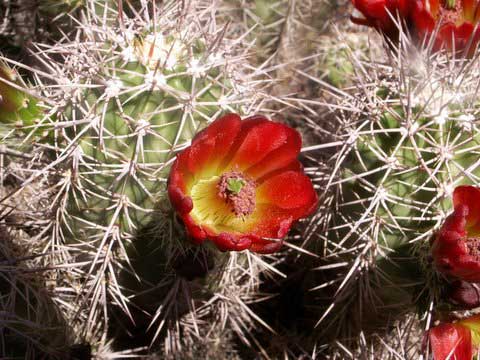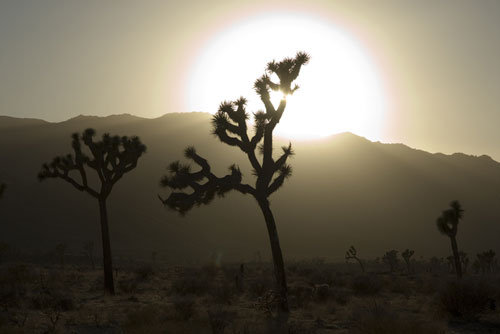![]()

Explore the California Deserts in the Spring!
|
|
Deserts of Southern California
|
|
Bio. Sci. 16V - Deserts of Southern California
Field Trip Dates:
Sunday March 16 - Saturday March 22, 2008 (occurring during Spring Break)
Pre-Seminar: March 6, 6-9 pm, Rocklin Campus, Sewell Hall, room 112
During the Pre-Session class section, details about class requirements, transportation (college vans provided), camping, food groups, biological / ecological introduction to study sites visited and other information will be provided.
Post-Seminar: Thursday, April 3, 6-6:30 PM
2 Units - Credit Course
Course Code: 04253
$50 - Entrance and Camping fee due at registration
Instructor: Krissy Gilbert
kgilbert@sierracollege.edu
Field studies in biology courses provide information and hands-on experiences at selected sites which best demonstrate the biological principles being studied. This specific spring class examines the ecosystems of various desert study sites in California. The field class will emphasize animal and plant adaptations to "hot" desert life, identification of desert plants, and desert ecology concepts and environmental factors. California provides a rich variety of desert environments, desert plants, and animals to study. The field work will emphasize (1) identification of desert plants and animals; (2) their special adaptations to the desert climate and habitats; (3) ecological communities and their interdependence; (4) principles of desert ecology and conservation, and (5) man's influence upon the fragile desert ecosystems.
The Plan (weather and time dependant): We will depart Rocklin early Sunday morning, and travel east on Interstate 80 over the Sierra Nevada, and south on US Route 395. We will take a break at Mono Lake to discuss “cold” desert ecosystems and the unique ecology of the Mono Basin, and then continue south towards Bishop or Big Pine, where we will camp the first night. Monday morning we will visit Manzanar, and then continue south, leaving the Great Basin behind. We will visit the Desert Tortoise Natural Area, travel through the Mojave, and on to the Colorado Desert. We will spend two nights camping at Anza Borrego State Park, and explore the unique flora and fauna of the Sonoran Desert. If winter rains are abundant, we will likely enjoy a diverse display of spring wildflowers. On Wednesday we will visit the Salton Sea on our way north to Joshua Tree National Park. We will spend two nights at Joshua Tree NP, exploring both Sonoran and Mojave Desert ecosystems before beginning our trip home on Friday. We’ll likely spend Friday night in the Transverse Ranges and return to Rocklin on Saturday evening. The weather in the desert can be variable; plan for cold nights (in the 20’s), warm days (maybe even into the 90’s), and the possibility of torrential rains. We will be travelling in Sierra College vans and by foot throughout the week.
Please note that because this is a Sierra College activity, alcohol and drugs are not permitted. No exceptions.
Plan for a week packed full of information and fun!
In addition to camping gear and food for the week, each student will be required to bring a map of California, a Field Journal, and a Field Notebook. Students will be encouraged to bring binoculars & field guides, both of which are available to borrow through the school. Details of course requirements, gear lists, etc. will be covered during the pre-session. This meeting is required and you must arrive on time so that you do not miss any important information.
- Krissy
|
Field Study Locations (to learn more use links) and other desert sites |
 |
Catalog Description: Bio. Sci. 16V - Deserts of Southern California
Explore and study the "hot" deserts of Southern California (the Mojave and Sonoran/Colorado Deserts and regional variations), discover unique animals and plants adapted to these extreme environments. Compare these deserts to nearby coastal habitats or the desert ecosystems in Arizona (depending on local conditions). Study sites visited include, at least, Joshua Tree National Park, Mojave Desert, Salton Sea, and Anza-Borrego State Park. Focuses upon the interdependency between the physical environments and the biological inhabitants that live there. Hiking may be necessary. Camping, entrance and transportation fees may be required.

Copyright 2008 Sierra College Biological Sciences Department. All Rights Reserved.
![]()
![]()

